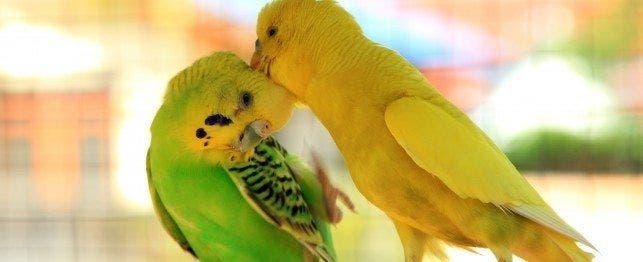
Lovebirds: Are They Really in Love?
If you see a couple transfixed in mutual admiration, or strolling along hand in hand, or smooching on a park bench, it’s almost a knee jerk reaction to say (or think) “look at that pair of lovebirds.” The expression originated presumably with reference to the apparent intense devotion of pair-bonded birds, as is commonly the case in the avian world, or, more specifically, to the behavior of the genus Agapornis, or actual lovebirds.
Are lovebirds capable of such devotion? The answer to this question is a definite but qualified yes. There isn’t just one species of lovebird, there are nine, and their courting and post-egg laying behavior toward each other and the brood is quite different. It is generally true in the avian world (and elsewhere) that if the male and female are identical, following courting and mating, they will bond closely, exclusively, sometimes for life, to take care of at least one generation of eggs together and to raise their mutual progeny.
In species of birds where the male and female are different in form and color, so-called sexually dimorphic species, such close bonding is not usually the rule. In such cases the smaller of the pair (almost always the female) is left to incubate the eggs and take care of the young without much help from her previous suitor. So it seems that if a species of bird is not sexually dimorphic that the “lovebird” expression is more likely to be appropriate.
As mentioned, lovebirds come in nine different species or varieties. Careful inspection of each reveals differences in sexual dimorphism and thus, presumably, fidelity. While Swinderen’s, peachface, Nyasa, masked, black-cheek, and Fischer’s lovebirds exhibit no sexual dimorphism, Madagascar, Abyssinian, and red faced species do.
One factor that seems to influence sexual dimorphism is the number of eggs per hatching. Where the number of eggs is high, both sexes have a rich genetic investment in their brood. It makes good genetic sense for them to raise the batch together from the point of view of their own (species) immortality. On the other hand, if the female lays only two or three eggs, the male can do better, genetically speaking, by sharing himself around. In order to do this in the face of serious competition from other males with the same idea, he must be big and strong to meet the competition and colorfully attractive to win over his mate.